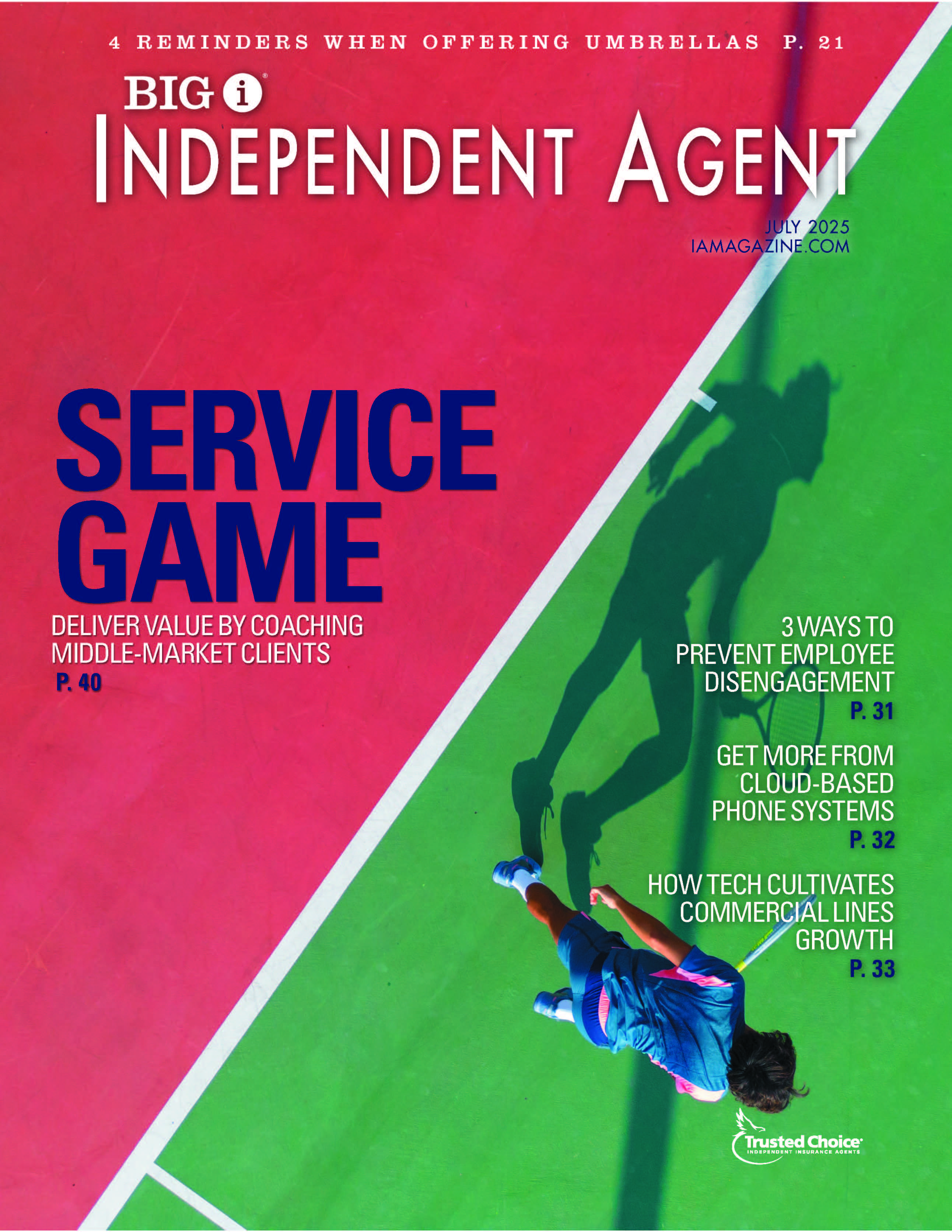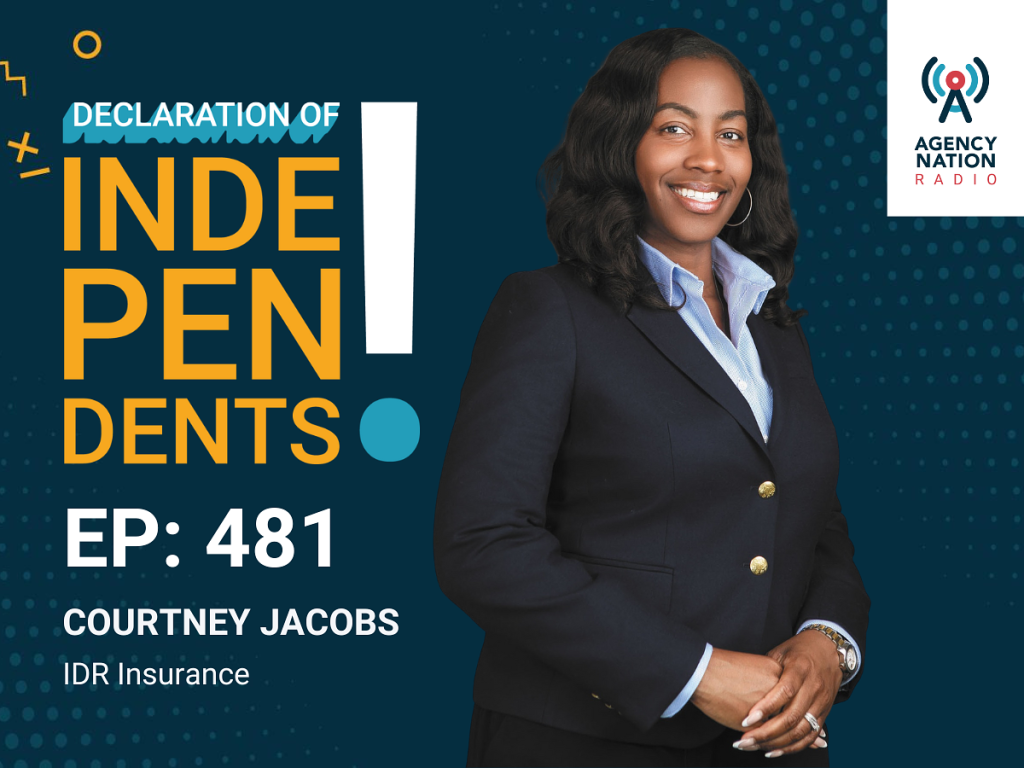4 Reminders for Agents When Offering Umbrella Coverage

By Jim Redeker
Due to the nature of the claims that reach this level of coverage, errors & omissions claims involving personal umbrella coverage have always been severe. But in recent years, these claims have also become more frequent.
Umbrella policies are designed to provide an extra layer of liability protection. However, agents must take extra care to make sure coverage has been offered, is properly in place and the process—whether coverage was accepted or declined—was documented.
To mitigate the risk of an E&O claim, insurance professionals need to approach offering umbrella coverage with diligence and consistency. Here are four reminders for agents when offering umbrella coverage:
1) Offer umbrella coverage. You cannot avoid a claim by simply not offering the coverage. You should offer umbrella coverage to customers who are buying the highest liability limits they can purchase.

📅July 22 Webinar: Avoid E&O with Additional Insureds in Contracts
Also, if you have high-net worth clients clients who are not purchasing adequate liability limits, you should document in writing that you strongly suggest they reconsider their liability coverage choices. We see claims for failing to advise someone that they could purchase umbrella coverage to sit over their primary coverage.
2) Never assume you are insuring every vehicle your customer possesses under their personal umbrella. Too often, we see that a new driver in the family has minimum limits on an auto, and the agency is unaware that the auto exists. The same goes for boats, jet skis and motorcycles.
Document that you are unaware of any other personal vehicles the customer has, but if they have other vehicles, they need to carry minimum limits of $X to trigger their umbrella policy. The lowest dollar claims we see on personal umbrella policies is this gap between the primary policy limits and where the umbrella limits begin.
Speaking of gaps between primary and umbrella coverage, we also see claims where the customer asks their agent to lower their primary limits. This request should be a red flag to any insurance agent. If a customer asks to lower their primary limits, check whether they have umbrella coverage. Furthermore, anytime a customer asks to lower their limits, this should trigger a written response from the agency advising against lowering their limits.
While you may not be able to convince your customer to retain their current limits, the documentation is good evidence if there is a subsequent claim against the agency when their customer is underinsured for a claim.
3) Check if your customer owns a business. Document that personal umbrella coverage will not cover their business liability. With the exception of limited circumstances, the customer will need to address their business liability through their business insurance.
4) Include coverage for uninsured/underinsured motorists (UM/UIM) on the quote. Some of the largest umbrella claims we have seen are for failure to include UM/UIM coverage on an umbrella policy. Typically, your high-net worth clients look for umbrella coverage to cover their potential liability and protect their assets. They are not thinking about added protection for themselves. This is where you need to take the time to educate your customer.
More on Personal Umbrella
If your customer is badly injured by an uninsured or underinsured driver, they seek help from their insurance agent. You may find yourself in court with your badly injured customer—who was injured through no fault of their own—and they will point at you for not protecting them with adequate coverage.
As a high-net worth clients individual, they could have easily paid the additional premium for additional coverage. The jury will be full of sympathetic insurance consumers who also rely on their insurance agents to look out for them. The only chance you have to defeat a claim against you is to show you quoted personal umbrella coverage with UM/UIM included and your customer requested it be removed.
Naturally, all of this should be in writing, stating that the coverage was deleted against your advice. This is the only way you can win in front of a jury and avoid becoming an example in a future E&O Know column.
Jim Redeker is vice president and senior underwriter at Swiss Re Corporate Solutions and works out of the office in Kansas City, Missouri. Insurance products underwritten by Swiss Re Corporate Solutions America Insurance Corporation, Kansas City, Missouri, a member of Swiss Re Corporate Solutions.
This article is intended to be used for general informational purposes only and is not to be relied upon or used for any particular purpose. Swiss Re shall not be held responsible in any way for, and specifically disclaims any liability arising out of or in any way connected to, reliance on or use of any of the information contained or referenced in this article. The information contained or referenced in this article is not intended to constitute and should not be considered legal, accounting or professional advice, nor shall it serve as a substitute for the recipient obtaining such advice. The views expressed in this article do not necessarily represent the views of Swiss Re and/or its subsidiaries and/or management and/or shareholders.











